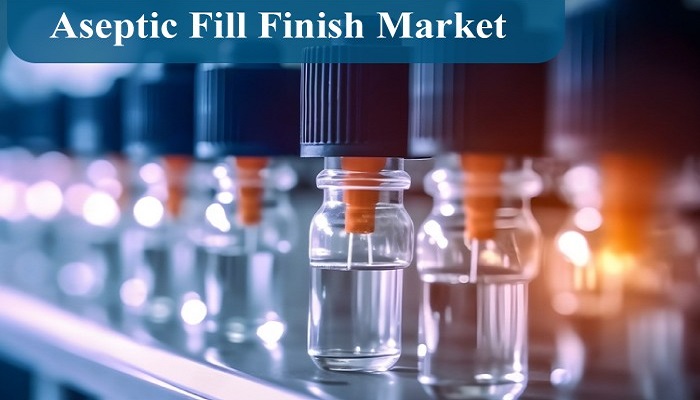It’s important to highlight that aseptic fill finish operations demand skilled personnel, specialized automated equipment, a controlled cleanroom environment, and constant supervision to maintain the sterility and safety of the final pharmaceutical product.
Nevertheless, due to the high costs associated with specialized equipment and the expertise required, it’s challenging for drug developers with limited resources and capacity constraints to meet their clients’ needs.
As a result, many stakeholders are opting to outsource their fill finish requirements to contract service providers. These providers offer biologics fill finish services and small molecule fill finish services. Furthermore, there’s a need to expand capacity to meet the expected demand for these operations.
To address this need, service providers have entered into various agreements in recent years. The aseptic fill finish services market is expected to grow steadily in response to the ongoing efforts within this industry.
Key Market Insights
Increasing Demand for Aseptic Fill Finish Services
Aseptic fill finish is a crucial step in pharmaceutical production, involving the sterile filling and packaging of therapeutic products. Even a minor mistake during this process can result in microbial contamination, posing a significant risk to patient health. Therefore, aseptic fill finish operations must be carried out in controlled environments to minimize exposure to factors that could affect product stability and effectiveness. This, in turn, extends the shelf life of the drug product. It’s worth noting that many companies now perform fill finish operations using automated equipment, reducing manual intervention. This practice enhances production efficiency, minimizes downtime, reduces waste, and increases overall productivity.
Outsourcing Aseptic Fill Finish Operations
The growing demand for pharmaceutical and biopharmaceutical products has created a need for increased production capacity and corresponding aseptic fill finish operations. However, substantial capital investment and complex infrastructure are necessary for the in-house filling of biologics and small molecules.
Additionally, errors during the fill finish process can lead to microbial contamination, resulting in loss of product, production delays, and most importantly, endangering patient health. These challenges have led pharmaceutical developers to outsource their fill finish operations to service providers equipped with aseptic facilities and specialized equipment to ensure product quality.
Key Drivers of the Aseptic Fill Finish Services Market
Currently, the rising demand for outsourcing aseptic fill finish services is driven by several factors, including a growing pipeline of drug products, stringent regulations, in-house capacity limitations, technological advancements, and increased awareness of the benefits of aseptic fill finish services.
Current Market Landscape of Aseptic Fill Finish Service Providers
The current market landscape boasts over 235 aseptic fill finish service providers worldwide. The market is well-fragmented, featuring large, mid-sized, and small companies with the necessary expertise to offer aseptic fill finish services for various types of packaging containers.
Moreover, recent developments in this pharmaceutical sector indicate that service providers are actively enhancing their sterile pharmaceutical manufacturing capabilities and infrastructure to meet current and anticipated demand for aseptic fill finish services.
Overall Size of the Aseptic Fill Finish Services Market
Driven by the growing pharmaceutical and biopharmaceutical product pipeline and increased demand for contract services, the aseptic fill finish market is expected to achieve a 7% compound annual growth rate (CAGR) from 2023 to 2035.
Specifically, vials and prefilled syringes are projected to capture the largest share of the market in terms of packaging containers. Currently, the majority of the market is represented by companies based in North America and Europe.
Key Players in the Aseptic Fill Finish Services Market
Key players offering aseptic fill finish services for biologics and small molecules include Aenova, AbbVie Contract Manufacturing, APL, Asymchem, BioPharma Solutions, BioReliance, Boehringer Ingelheim BioXcellence, Catalent Biologics, Charles River Laboratories, CordenPharma, Delpharm, Fareva, Fresenius Kabi, Glaxo SmithKline, Hetero Drugs, Intas Pharmaceuticals, Lonza, Pierre Fabre, Patheon, Pfizer CentreOne, Plastikon Healthcare, PiSA Farmaceutica, Recipharm, Sharp Services, Wacker Biotech, Syngene, Takara Bio, WuXi Biologics, Siegfried, and Wockhardt.
Frequently Asked Questions
How many companies provide aseptic fill finish services?
Answer: Currently, there are over 235 companies offering aseptic fill finish and related services, including aseptic filling, terminal sterilization, and blow-fill-seal.
What are the latest trends in the aseptic fill finish services market?
Answer: The aseptic fill finish market is evolving with the adoption of advanced technologies such as robotics and single-use systems to enhance accuracy, efficiency, and safety. Single-use technology reduces the risk of cross-contamination and eliminates the need for cleaning validation, while automated aseptic filling systems reduce human intervention and improve product consistency and quality.
What is the growth rate of the aseptic fill finish services market?
Answer: The global aseptic fill finish services market is expected to grow at a compound annual growth rate (CAGR) of 7% from 2023 to 2035.
Which region dominates the aseptic fill finish services market?
Answer: Currently, Europe contributes to over 35% of the overall market share. However, Asia-Pacific is expected to grow at a relatively faster rate during the forecast period.
Which segment, in terms of the type of molecule, holds the largest share of the aseptic fill finish services market?
Answer: The small molecules segment currently holds the largest share, accounting for 68% of the overall aseptic fill finish services market, and this trend is expected to continue in the forecast period.
Which types of packaging containers are most commonly used in the aseptic fill finish services market?
Answer: Vials currently account for the largest share (67%) in the global aseptic fill finish services market.



















